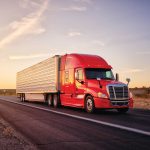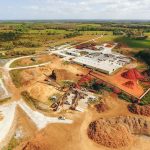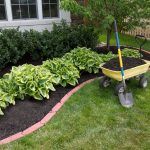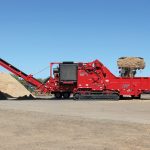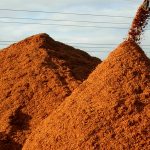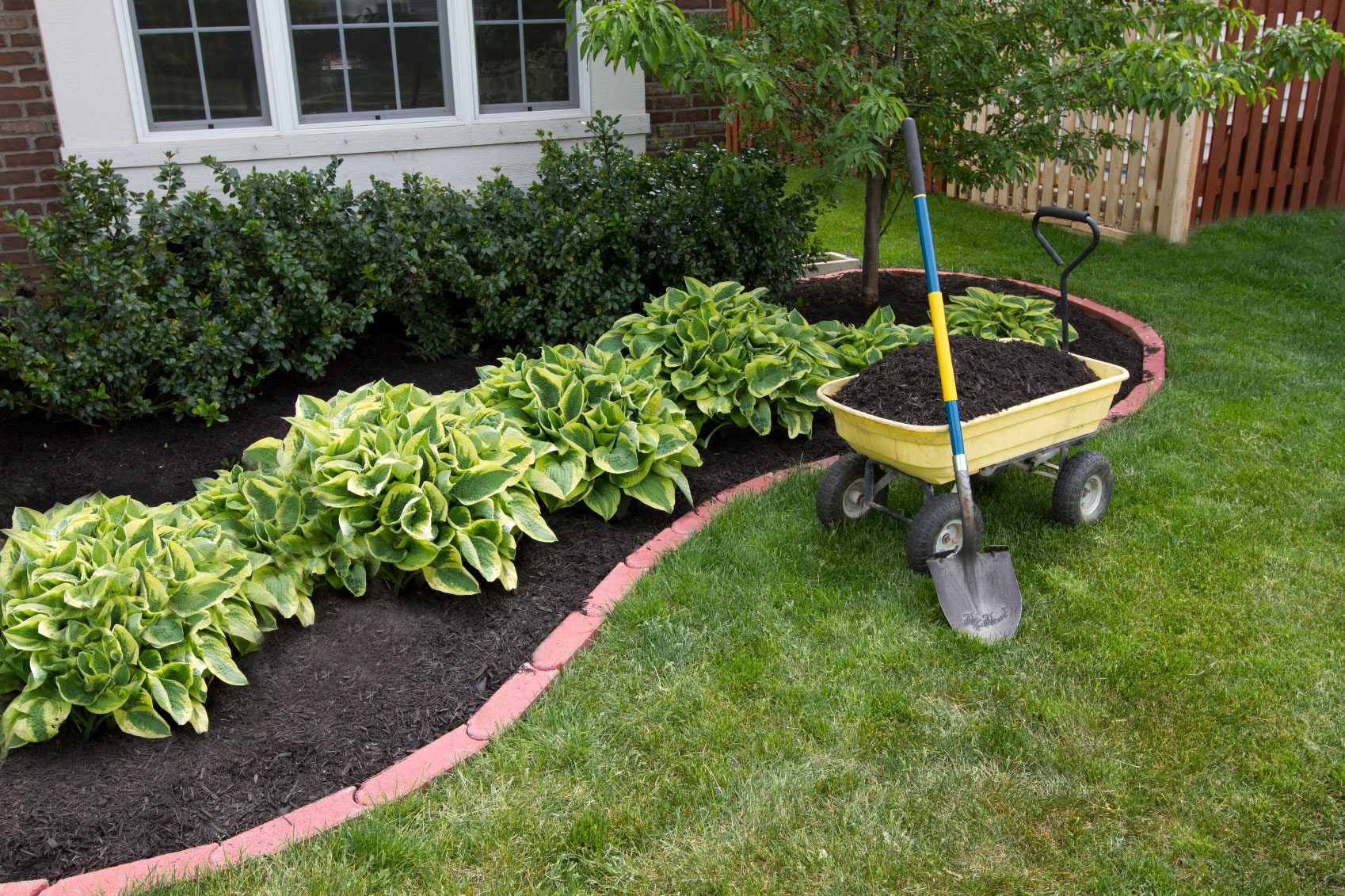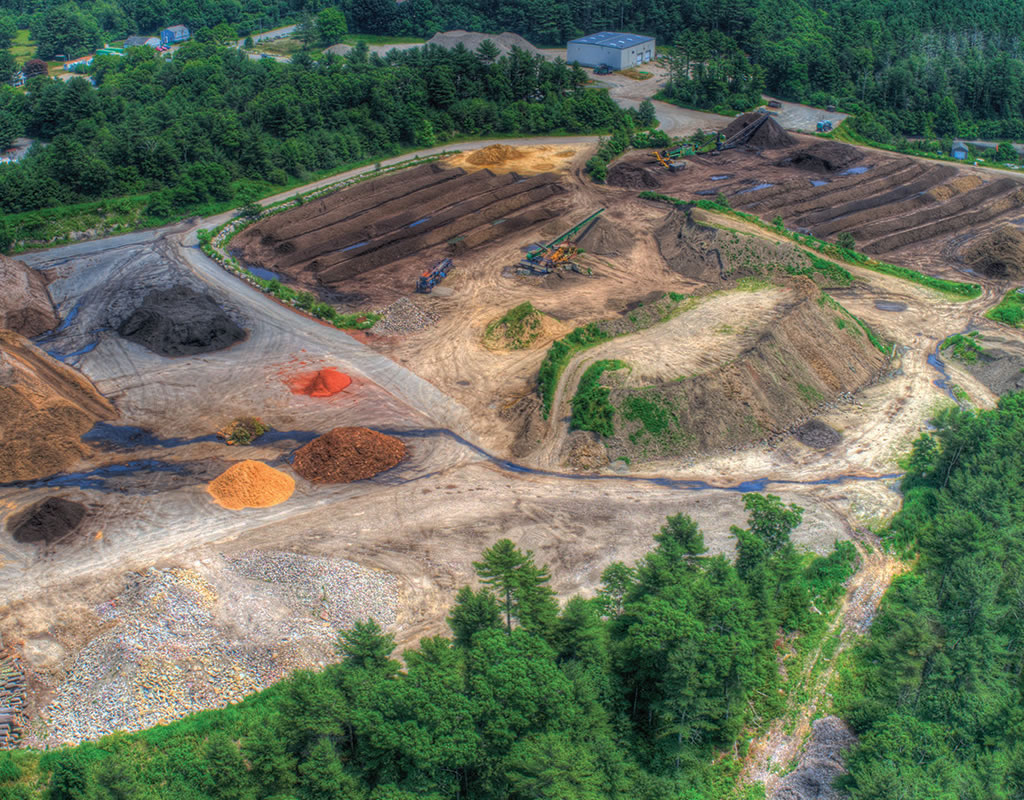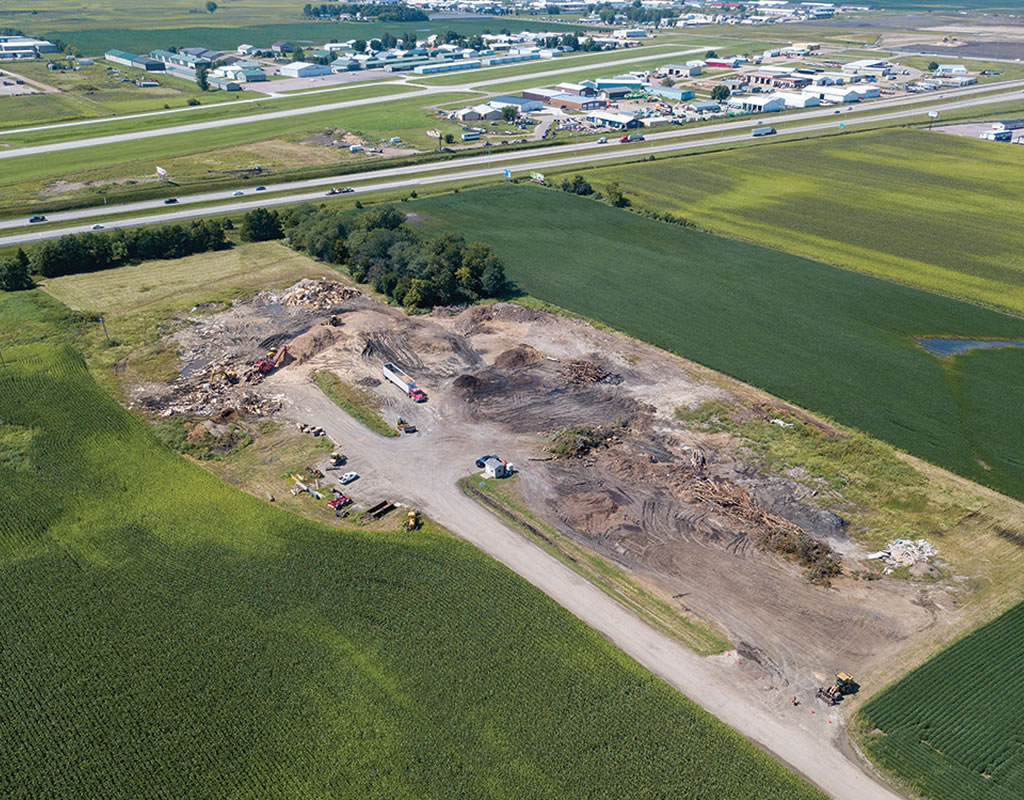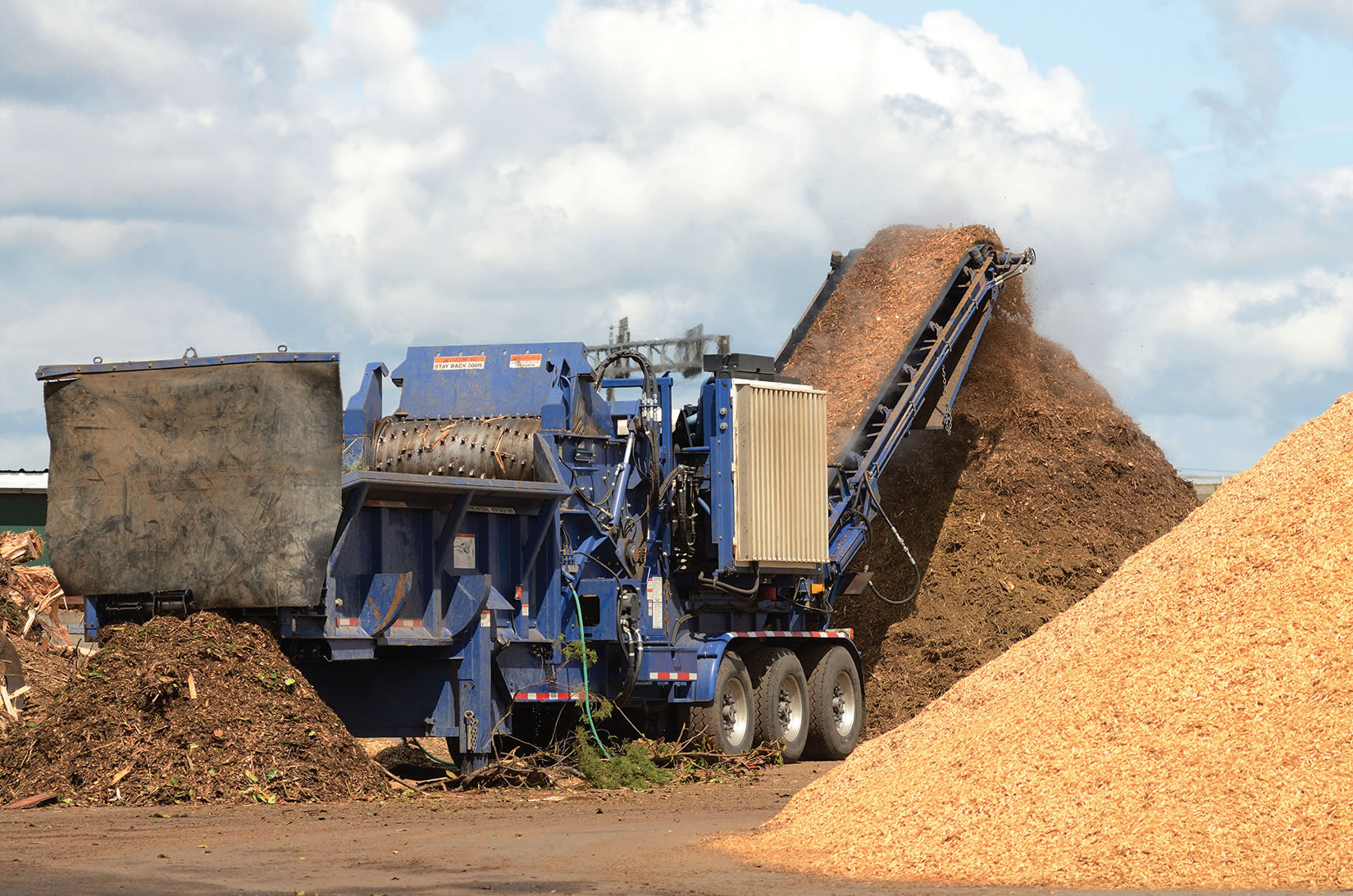By Ken McEntee
In the past, determining the volume of mulch or compost in a trailer was often a matter of guesswork.
"Mulch is sold by yardage, but until recently there was no real method to certify yardage," said Derek Schussele, account manager at Walz Scale, of East Peoria, Ill.
"A lot of times an operation would have somebody sitting at the scale house, who would look at the truck and say, 'that looks like 40 yards.'"
A somewhat more accurate volume can be calculated based on the weight of the material. But, as Schussele explained, "Volume calculated off of weight is different from actual volume. It might be close, but it is different, and that difference over time can be huge amounts of material.”
That's why many bark, mulch, soil and compost producers are installing volume scanning systems, such as those offered by Walz and Loadscan Ltd., of Dinsdale, Hamilton, New Zealand. Using relatively simple laser scanning technology, the systems scan passing trucks and trailers to accurately measure the volume of material they are carrying.
"It's a perfect solution for mulch and soil producers who tell me that they're sick of having arguments with their customers over volume," said Carey West, owner of Loadscan. "A problem in this business is that bark and mulch products suck up moisture very easily when it rains, and the water will evaporate out when it's hot and dry. It's hard to get a true representation of the actual volume you have in the back of the truck when you're weighing water content. Scanning the load allows them to guaranty the volume they are shipping."
The process is simple.
Scanning heads are placed on poles at the entrance/exit of the production facility. Trucks that slowly pass or park beneath them are scanned. Data from that scan is fed into a computer, which stores the information and produces a ticket that contains the volume, along with a variety of other information that an operation may choose to include.
"Typically, the first thing that happens is that an empty truck will be scanned to produce a reference scan," Schussele said.
 The reference scan can be saved in the system for future use, particularly if the truck is a part of the producer's fleet, or is one that makes regular stops at the producer's site. The reference scan is compared to subsequent scans of the loaded truck to calculate the volume it is carrying. The system can be used to measure outbound shipments delivering materials to customers and inbound vehicles bringing in feedstock.
The reference scan can be saved in the system for future use, particularly if the truck is a part of the producer's fleet, or is one that makes regular stops at the producer's site. The reference scan is compared to subsequent scans of the loaded truck to calculate the volume it is carrying. The system can be used to measure outbound shipments delivering materials to customers and inbound vehicles bringing in feedstock.
Both Walz and Loadscan reported that their systems are accurate to plus/minus 1 percent.
Loadscan, West said, has been installing its Load Volume Scanner (LVS) system - or a predecessor system - since 1998. The system was developed by his late father, Wayne, who wanted to solve the problem of accurately measuring loads of material arriving at his civil construction sites in New Zealand.
"We were being shortchanged on supply volumes and were overpaying people on the outbound side," Carey West said. "It was constant discussion and arguments with drivers over load size. One of my jobs in the early years was to get up on the trucks and level the load out by shovel and take measurements of the load. My dad wanted to develop a system to measure the volume without having to touch the material at all."
The initial system, called Tally Clerk, was sold mainly in New Zealand.
After Wayne West passed on in 2011, Carey West decided to change the name to Loadscan, and take the product global.
"We already had a couple large operations using the system in the Northeast USA and in Texas," he said. "The system is used in the mining, quarrying and construction industries, but the bark and soil business in the USA is one of our key markets and key customer bases."
Schussele said Walz, a global supplier of scales and weighing technologies, initially developed its Load Scanner system for the mining industry about six years ago.
"The mining industry needed a system to monitor placement of materials to ensure balanced loads on its equipment," he said. "Some of our customers then started to ask for a volume scanning device as well, and the system has taken off into other industries. The concept actually has been around for a while. There are a couple operations that have been using self-built scanning devices for 30 years, but they are not as accurate as what's available today."
Today's systems generally include a basic package that includes the scanner heads, the pole that holds the scanner, a power box and a computer with the scanning software. Options are available according to how the scanning lane is configured and what additional data an operator wants to collect.
For example, Schussele said, the scanner will produce a color image that illustrates the depth of loaded material in the trailer, but an optional high-definition camera mounted near the scanner will provide photos of the material.
"Some people like to have that visual bird's eye view to identify materials and products and keep that in the records," he said.
Optional RFID (Radio Frequency Identification) tags and a reader can help to make the scanning lane more efficient - particularly for busier operations. An RFID tagged trailer can automatically activate a scan as it passes beneath the scanner - similar to EZ Pass and other collection systems used on toll roads, only much slower. Without RFID, scans are activated manually - either by an attendant at the scanning lane, or by the driver using a mobile device app.
Requirements to set up a scanning lane include a straight approach, about three trailers long, a concrete foundation - roughly 4-x-4 feet - and a basic electrical supply.
"Our system runs on 24 volts," West said.
West and Schussele said once the site is prepared, installation of the system can often be done in an hour or less.
Mobile scanning units on heavy duty galvanized trailers also are available.
"Every LVS unit we supply includes its own touch screen PC monitor with software that is simple to use," West said. "The system can track and store time and date, the direction of the truck - in or out - and the volume, and it can be customized to include things like product and customer information. It also can interface with account management software.”
Schussele said all data collected can be exported to Excel for analysis, and that the Walz package includes a cloud storage account.
West said although volume scanning systems are able to calculate the weight of a load based on its volume and density, the scanning systems don't necessarily compete with truck scales.
"A number of our customers run both scales and scanners," West said. "Because mulch and soil products are sold by volume, not weight, we're providing the essential piece of the puzzle."
But weight measurements also are important, said Tim Kennedy, sales representative for Walz.
"You don't want your trucks to be overweight on the highway," he said. "We can calculate weight based on volume, but the scale gives you an exact weight. When you have accurate measurements of both weight and volume, then you know your bulk density. So for most facilities, it's important to have both a scanner and a scale."
Kennedy added that Walz' volume scanning system can interface with scales to provide comprehensive reports.
Soil and mulch producers, West said, are gradually adopting the new volume scanning technology.
"It's not easy to get people to try something new," he said. "Some of the early users tended to be the independents who own their own businesses, but we've made inroads to the larger corporate operations. They are beginning to see the benefits and how it solves a big problem in the industry."
According to Schussele, "I think most mulch and compost people are aware of the scanning technology, and I think we're getting to the point where they are jumping on board and using it. It's becoming more mainstream and at some point I think it will become an industry standard. I don't think we're there yet."
West agreed.
"What this technology creates is trust in the measurements that people can use to help make their business efficient and profitable," he said. "I think this should be the industry standard in the bark and mulch industry and I think it's heading that way. You can't manage what you can't measure and you can't measure what you can't manage, and this is a big improvement over humans doing the bucket counting and estimating what they think is on there."
Related News
Subscribe Today
Every other month, Soil & Mulch Producer
News brings you important stories about:
• New Technology
• Products
• Industry News
• Research Studies
Soil & Mulch Producer News features articles and services relevant to your daily operations.

